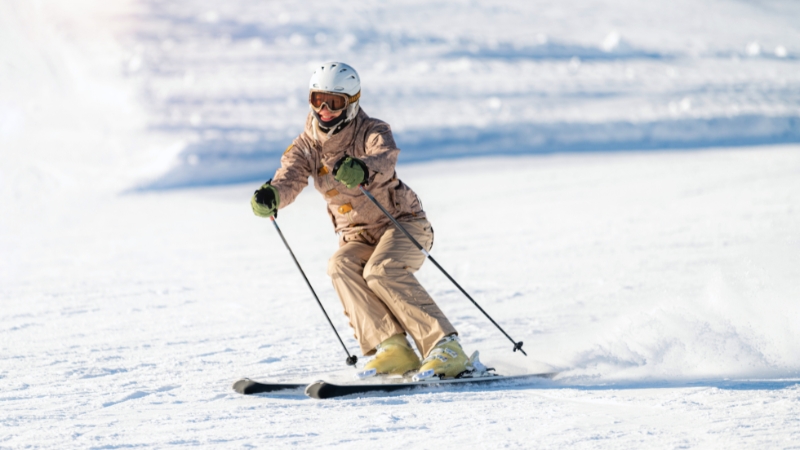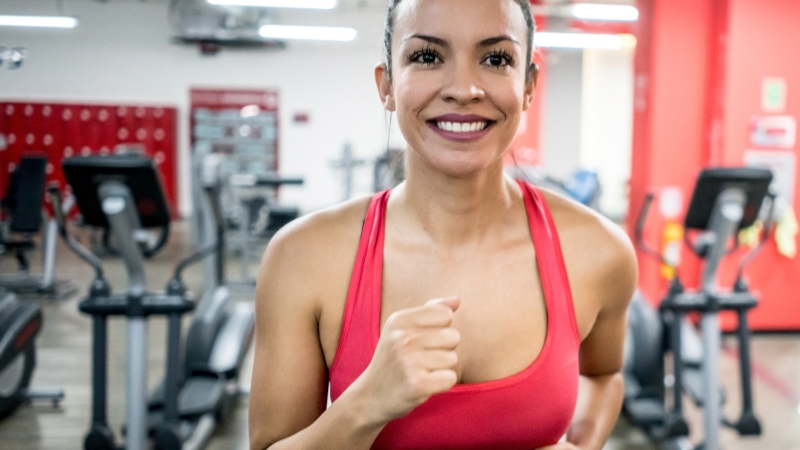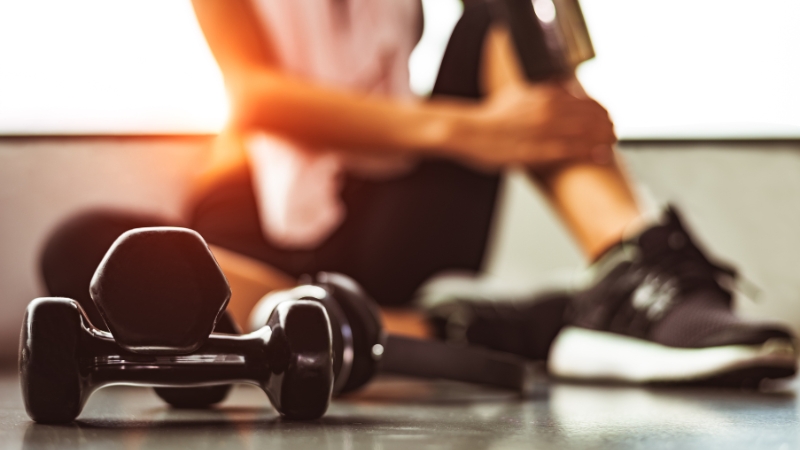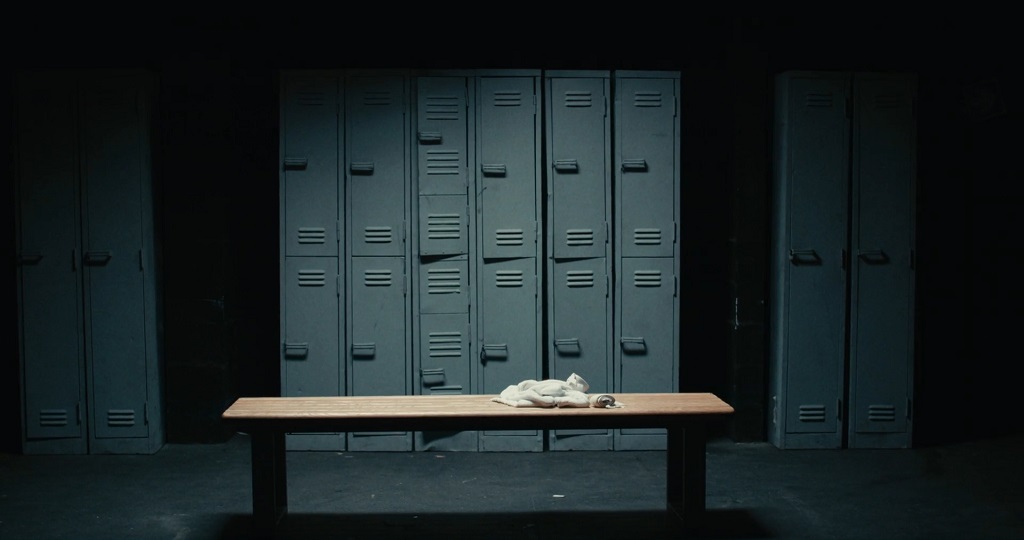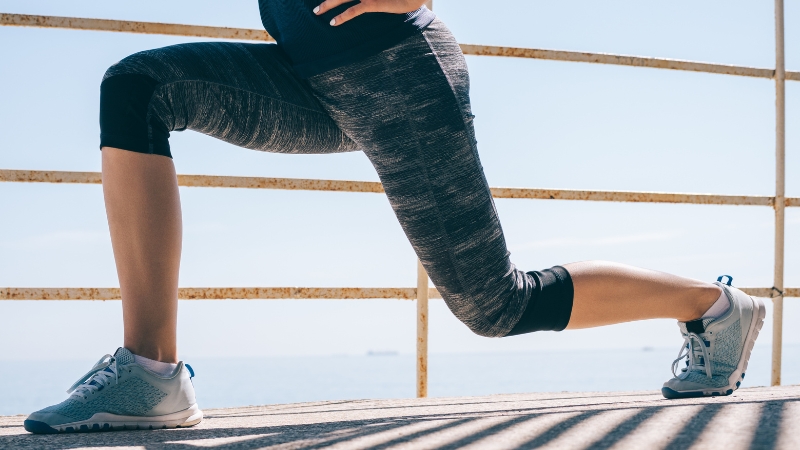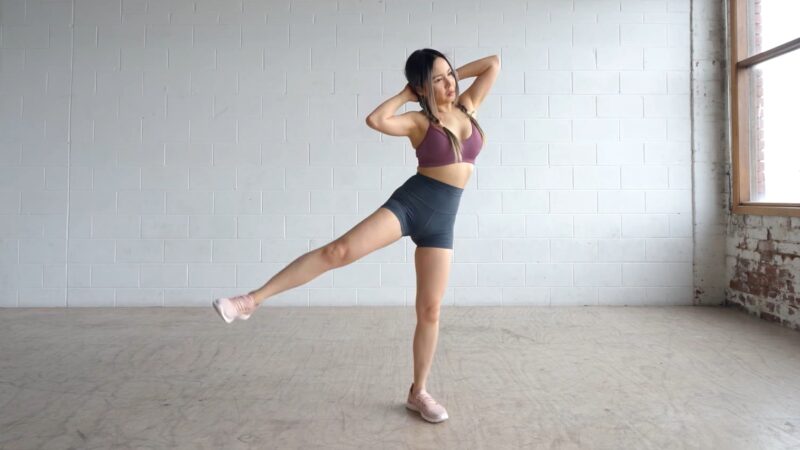
Share Post:
Most people want strong, defined abs, but getting down on the floor for crunches feels uncomfortable and boring. Bad knees, a stiff back, or a simple dislike for lying down can make traditional ab exercises a hassle. Standing abs workouts fix that problem.
They strengthen your core while keeping you upright, making workouts more natural and effective. Everyday movements like bending, twisting, and reaching all require core strength. Training abs while standing helps muscles work the way they do in real life.
Beginners will find them easier to follow, and experienced lifters can add weights to increase difficulty. No need for a gym or fancy machines. Bodyweight movements and simple equipment like dumbbells or kettlebells will make a big difference.
Legs, arms, and back muscles all play a role, turning a core workout into a full-body routine. The goal isn’t to waste time on pointless moves but to train smarter.
Let’s find out how to get the most out of this exercise.
Table of Contents
ToggleStanding Bicycle Crunch
Most people know the bicycle crunch on the floor, but the standing abs version is way better.
No back pain, no awkward rolling around, just straight-up core work that actually makes sense.
This move hits the abs and obliques while also forcing your body to balance, which means even more muscles get involved.
How to Do It
- Stand with your feet shoulder-width apart. Put your hands behind your head like you’re about to do a sit-up.
- Lift your right knee as high as possible while twisting your torso so your left elbow moves toward it.
- Lower back to standing, then repeat on the other side—left knee up, right elbow toward it.
- Keep your movements controlled. Don’t rush or swing your arms like a clown. Twist from the core.
- Do 3 sets of 12–15 reps per side.
Tips for Better Results
Standing Side Crunch
This one hammers the obliques—the muscles on the sides of your abs that give that sharp, defined look. It’s easy to do, but doing it right makes a huge difference. Most people just lean side to side like a lazy tree in the wind. That won’t do anything. You need to really squeeze the muscles for it to work.
How to Do It
- Stand with feet shoulder-width apart. Put your hands behind your head or hold a light dumbbell in one hand for extra resistance.
- Shift your weight to your right leg and lift your left knee toward your left elbow. Crunch your side as hard as possible.
- Lower back down and repeat on the same side before switching.
- Do 12–15 reps per side, 3 sets.
Tips for Better Results
Standing Crossover Toe Touch
This move stretches and strengthens at the same time. It works the entire core, especially the obliques, and improves flexibility in your hamstrings. If you do it fast, it also doubles as a sneaky cardio move.
How to Do It
- Stand with your feet wider than shoulder-width apart. Extend your arms straight out to the sides.
- Keep your legs straight and twist your torso, reaching your right hand toward your left foot.
- Return to standing, then reach your left hand toward your right foot.
- Continue alternating sides for 12–15 reps per side. Do 3 sets.
Tips for Better Results
Lunge with Twist
This one combines lower body strength with serious core activation. If you want abs that actually work in real life—not just look good—this move is a must. It forces your core to stabilize while your legs do the work, just like in sports or daily movement.
How to Do It
- Stand with your feet hip-width apart, holding a dumbbell or medicine ball in front of you. If you don’t have weights, just clasp your hands together.
- Step forward with your right leg into a deep lunge. Keep your back straight and your core tight.
- While in the lunge, twist your torso to the right. Move from the core, not just your arms.
- Twist back to the center, push off your front foot, and return to standing.
- Repeat on the other side. Do 3 sets of 10–12 reps per leg.
Tips for Better Results
Single-Leg Deadlift
This is not just a leg move—it’s a core killer. It forces your abs to work hard to keep your body balanced while stretching and strengthening your hamstrings. If you want a rock-solid core, this exercise will get you there.
How to Do It
- Stand with your feet hip-width apart, holding a dumbbell or kettlebell in one hand.
- Shift your weight to your left leg and slowly hinge forward at the hips, extending your right leg straight behind you.
- Lower the weight toward the ground while keeping your back straight and your core engaged.
- Go as low as you can while maintaining balance, then return to standing.
- Repeat on the other side. Do 3 sets of 8–10 reps per leg.
Tips for Better Results
Standing Bird Dog
This one looks simple, but it’s tough if you do it right. It’s great for core stability, balance, and coordination. It also strengthens the deep core muscles that protect your spine, making it a smart move for injury prevention.
How to Do It
- Stand tall with your feet together and arms at your sides.
- Shift your weight to your left leg. Slowly extend your right leg straight behind you while reaching your left arm forward.
- Hold for 3 seconds, keeping your core tight and back flat.
- Return to standing and switch sides.
- Do 3 sets of 10 reps per side.
Tips for Better Results
Jump Squat with Core Engagement
Jump squats aren’t just for legs. When done right, they fire up your entire core, making your abs work to stabilize your body during explosive movement. This move builds power, burns fat, and strengthens your abs in one go.
How to Do It
- Stand with feet shoulder-width apart, chest up, and arms at your sides.
- Lower into a squat, keeping your weight in your heels and core tight.
- Explode up, jumping as high as possible while raising your arms overhead.
- Land softly with bent knees and immediately go into the next squat.
- Do 3 sets of 12–15 reps.
Tips for Better Results
Woodchopper (Dumbbell or Cable)
If you want powerful obliques and a strong, functional core, woodchoppers are a must. This move mimics real-life twisting motions and builds serious rotational strength. Perfect for athletes or anyone who wants abs that do more than just look good.
How to Do It
- Stand with feet shoulder-width apart, holding a dumbbell with both hands.
- Start with the weight near your right hip.
- In one motion, twist your torso and lift the weight diagonally across your body toward your left shoulder.
- Control the movement back down and repeat.
- Do 12–15 reps, then switch sides. Complete 3 sets per side.
Tips for Better Results
Medicine Ball Slam
This move is all about power. It works your abs, arms, and legs while giving you a solid cardio boost. If you want an ab exercise that also helps burn calories, this is it.
How to Do It
- Stand with feet hip-width apart, holding a medicine ball overhead.
- Brace your core and slam the ball into the ground as hard as possible.
- Catch it (or pick it up) and repeat immediately.
- Do 3 sets of 10–15 reps.
Tips for Better Results
Kettlebell Windmill
This move builds serious core strength, especially in the obliques. It also improves flexibility, stability, and shoulder strength, making it a great all-around exercise. If you want a strong, functional core, this one belongs in your routine.
How to Do It
- Stand with your feet slightly wider than shoulder-width apart. Hold a kettlebell in your right hand, pressing it overhead.
- Keep your right arm locked out and your eyes on the kettlebell as you slowly hinge at your hips, reaching your left hand toward your left foot.
- Keep your legs straight but not locked. Only go as low as your flexibility allows.
- Use your core to lift yourself back to the starting position.
- Do 3 sets of 8–10 reps per side.
Tips for Better Results
Pallof Press (Cable or Resistance Band)
This is one of the best core exercises you can do. It looks simple, but it forces your abs to work hard to resist rotation, which is key for real-world strength. It builds stability and protects your lower back from injury.
How to Do It
- Attach a resistance band or cable to a stable object at chest height. Stand sideways to the anchor point.
- Grab the handle with both hands and step away until there’s tension.
- Hold the handle at your chest, brace your core, and press your hands straight out in front of you.
- Hold for a second, then bring your hands back to your chest.
- Do 3 sets of 10–12 reps per side.
Tips for Better Results
Dumbbell Side Bend
If you want to carve out your obliques, this move is a must. It isolates the sides of your abs, helping define your waist while strengthening your core. Just don’t overdo the weight—bad form can lead to injury.
How to Do It
- Stand tall with a dumbbell in your right hand, left hand on your hip.
- Slowly bend to the right, lowering the dumbbell toward your knee.
- Pause, then use your obliques to pull yourself back up.
- Complete all reps on one side before switching.
- Do 3 sets of 12–15 reps per side.
Tips for Better Results
Overhead Circles with Dumbbell
This move forces your entire core to work as you control the weight above your head. It builds stability, shoulder strength, and deep core activation, making it great for anyone looking to improve overall core function.
How to Do It
- Stand with your feet shoulder-width apart, holding a dumbbell overhead with both hands.
- Engage your core and slowly draw a circle in the air with the dumbbell.
- Make the movement as smooth and controlled as possible.
- After completing one direction, reverse and go the other way.
- Do 3 sets of 10 reps per direction.
Tips for Better Results
Reverse Lunge with Twist
This move works your abs, obliques, legs, and balance all at once. Adding a twist makes your core work harder while improving rotational strength, which is useful in real-life movements.
How to Do It
- Stand with your feet together, holding a dumbbell or medicine ball in front of you.
- Step back with your right leg into a lunge. Keep your core engaged.
- As you lower into the lunge, twist your torso to the left.
- Twist back to center, then push through your left leg to return to standing.
- Repeat on the other side. Do 3 sets of 10 reps per leg.
Tips for Better Results
Standing Stabilization Hold
This looks simple, but it’s brutal if done right. Holding a weight out in front of you forces your core to work overtime to keep you stable. It strengthens deep core muscles, improves posture, and builds real-world strength.
How to Do It
- Stand with your feet shoulder-width apart, holding a dumbbell or weight plate at chest height.
- Extend your arms straight out in front of you. Hold the position.
- Keep your core tight and resist the urge to let your arms drop.
- Hold for 30 seconds, then rest. Repeat for 3 rounds.
Tips for Better Results
FAQs
Last Words
Standing abs workouts make core training easier, more effective, and more natural. No awkward floor crunches, no wasted time, just real movements that build strength where it matters. Every exercise on this list trains the abs in a way that actually helps with real-life movement, not just gym routines.
The key is consistency. Do the work, push harder over time, and focus on proper form. Weights, slow reps, and better control will make a difference. Weak cores lead to back pain, poor posture, and weaker lifts. Strong cores fix all of that. Get moving, stay focused, and start building real strength today.
Related Posts:
- 13 Best Stability Ball Exercises for Strong, Defined…
- Medicine Ball Ab Workout - 10 Powerful Core…
- The BEST Ab Workouts for Women: Target Your Core at…
- Resistance Band Arms, Abs, and Booty Workout - 10…
- Kettlebell Ab Workout - 5 Core Workout to Engage Core
- Workouts for Women with Endometriosis - Safe Core &…



